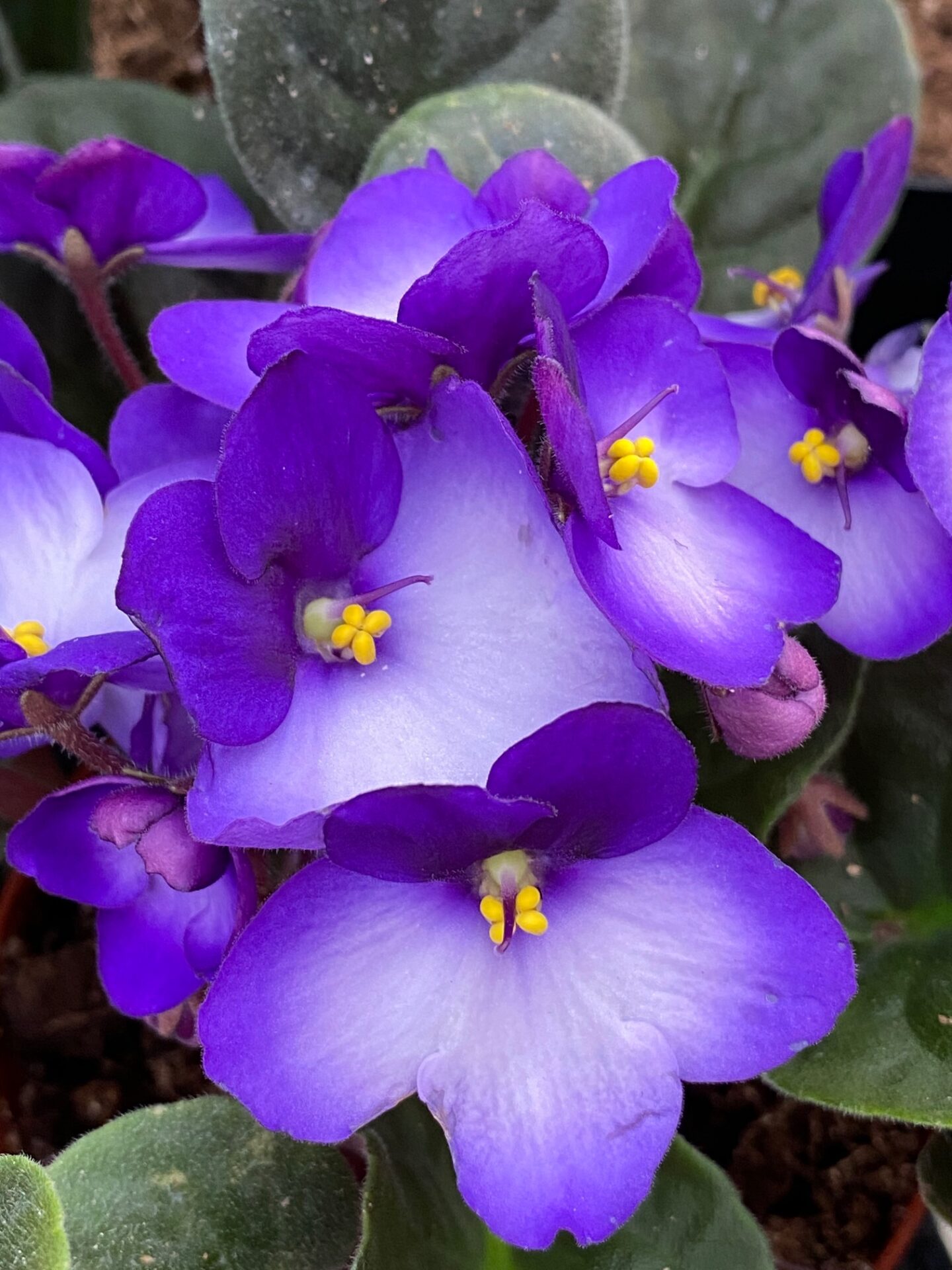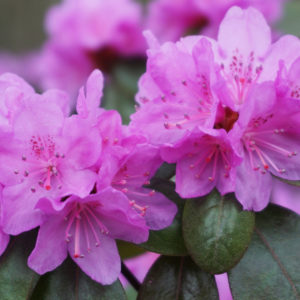2024 is the National Garden Bureau’s Year of African violets, which gives me the perfect excuse to write about this attractive little houseplant from the gesneriad family. They have been popular for decades due to being easy-care as well as offering colorful flower displays for weeks on end.
Their botanical name is Saintpaulia, given to honor Baron Walter von Sainte-Paul-Illiare, who in 1892 discovered them growing in Tanzanian forests and sent samples back to Germany. In 1927 commercial hybrids became available, and since then hybridization has led to varying plant sizes, leaf shapes and flower color ranging from white through pink, red, violet and purple. The largest varieties do not grow much beyond 6” tall, while the miniature ones are a petite 2” tall.

Like all houseplants, if you know their ideal growing conditions they will do well. African violets aren’t fussy compared to some plants and can be forgiving if you are a little late with the watering. They require bright indirect light, although an east or west window with a couple of hours of direct sun will be fine. They also are happiest in the temperatures that suit us – 65-75◦F with normal humidity (at least 40%), and like us they don’t care for drafts!
Water them when the surface of the soil is dry. Use room temperature water and discard any excess water – prolonged wet soil can lead to root rot. If you notice the leaves go limp this is an indication of either over or underwatering. When watering, aim to water at the base of the plant as droplets of water remaining on the leaves can lead to leaf scorch if then exposed to sunlight.
When growing conditions are right, African violets will bloom for a long period, although particularly in winter they will want to rest. To encourage blooming during the growing season water regularly with an African violet fertilizer. They also benefit from being kept slightly pot bound. If they are still not flowering for you the light levels could be too low or the plant could have too many leaves. To keep African violets looking their best periodically remove the lowest ring of leaves, along with any dead flowers. It is easy to carefully snap off leaves and flowers – just gently bend them to one side.

After a while they will need a little more attention as they will gradually grow a “neck” as successive rings of leaves die off. At this point you can do one of two things: re-pot or take cuttings and start over. When re-potting mature violets it will not be necessary to go up a size in pot. Remove any loose soil from the plant, and if it has grown a neck, remove the same depth of root mass from the bottom of the plant equal to the length of the neck. Dust the bare neck with rooting hormone and re-pot in the same pot (having cleaned it first) and fill in with a specialist African violet mix, or regular potting mix that has had some perlite added to it. Cuttings can be done with either the crown of a plant or individual leaves. They can be rooted either in water or dipped in rooting hormone then potted up: just water less than normal until new growth is visible.
Thus, with a little bit of care it is possible to keep these plants looking happy and healthy for many years to come. And if you are interested in other members of this plant family look out for other close relatives such as primulinas, Cape primroses (streptocarpus), flame violets (espiscia), lipstick plant (aeschynanthus) and goldfish plant (nematanthus).








